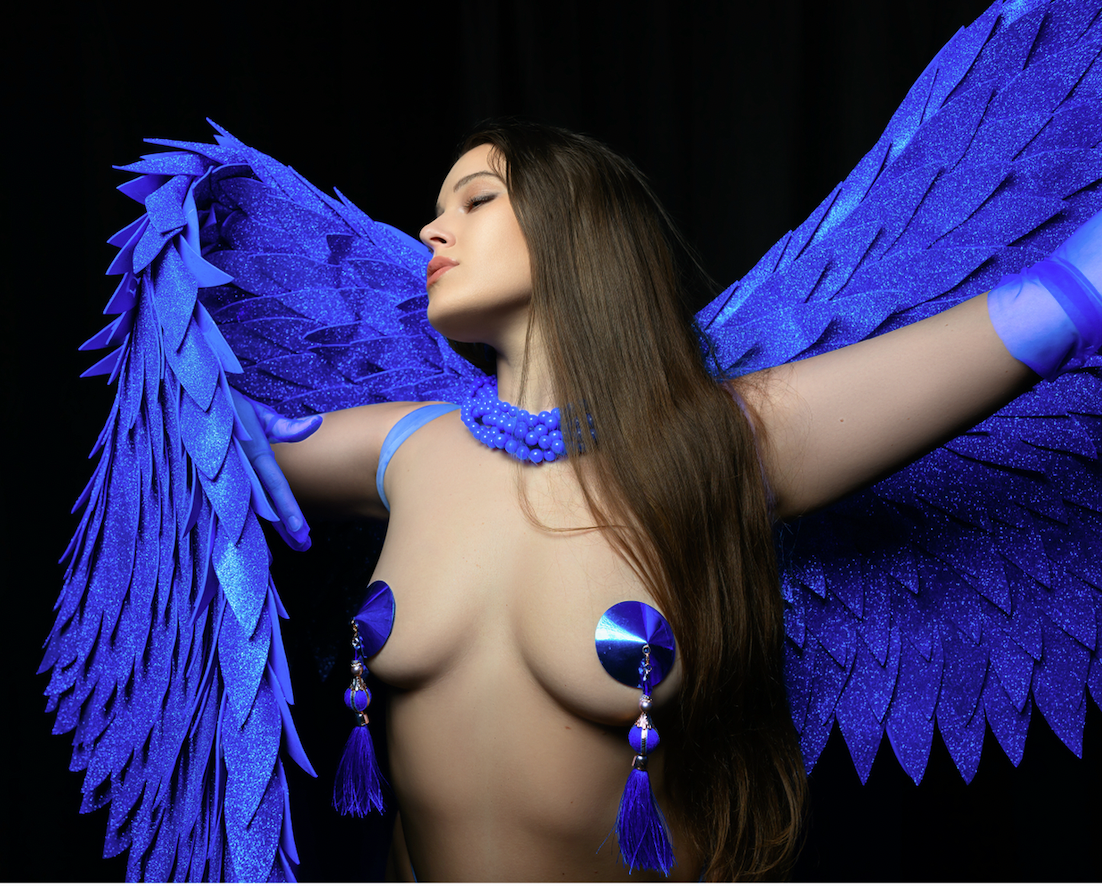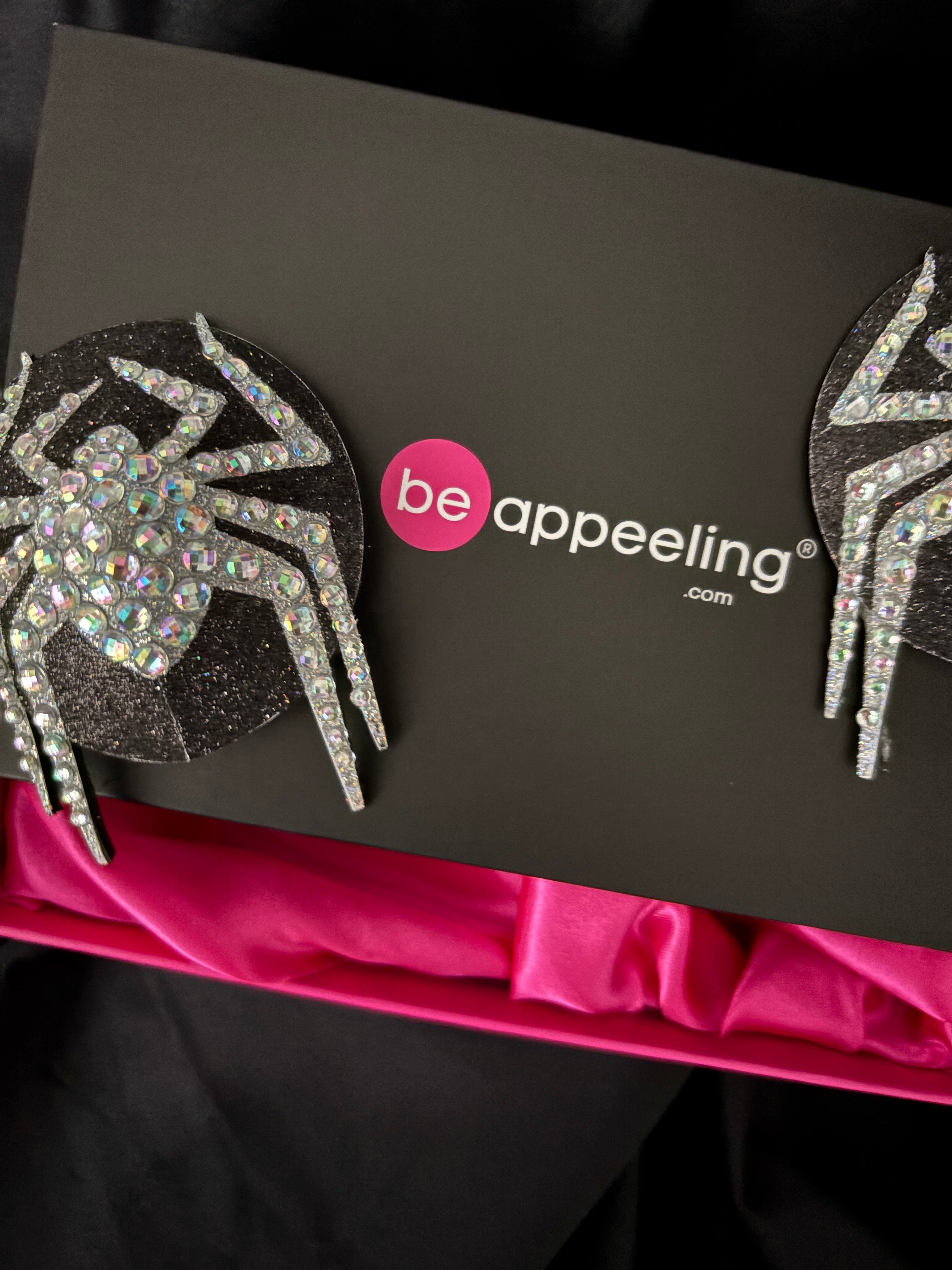
A Brief History of Pasties: From Censorship Rules to Runways
When I started Appeeling, the word “pasties” wasn’t part of the common lexicon — it almost always required explanation. I’ve always been delighted to share their story, educating anyone curious about this playful tool of seduction and honouring the many women who transformed it into an enduring symbol of performance, empowerment, and erotic glamour.
Pasties (n.) — “adhesive patches worn over the nipples by exotic dancers” — first entered the English lexicon in 1957, their name derived from paste in reference to the gems and decorative details often affixed to them. But the story of pasties begins much earlier, born from cultural fascination with the “exotic” and evolving into an enduring symbol of performance, spectacle, and empowerment.
The Origins: From the World’s Fair to the Circus
Pasties first emerged in the late 19th century as a Western fascination with belly dancing and exotic performance styles swept across Europe and America. At the 1893 World’s Fair in Chicago, dancers wore metal breastplates that covered little more than the front of the breast, often featuring a gem or metallic embellishment at the nipple. These costumes blurred the line between modesty and allure — and audiences were enthralled.
Circuses and traveling stage shows quickly adopted the look. As the acts evolved, so did the coverings: heavy metal breastplates gave way to lighter, adhesive versions, setting the stage for the birth of modern pasties.
The Burlesque Boom of the 1920s
The first true pasties, as we know them today, made their debut in Parisian dance halls of the 1920s, when burlesque performers embraced them both as a creative accessory and a legal necessity. At the time, censorship laws prohibited dancers from exposing the full breast. Pasties offered a loophole, allowing performers to bare “almost all” while still adhering to regulations.
True to burlesque tradition, the coverings became more than just functional. Performers embellished them with sequins, crystals, and tassels — transforming what was once a simple patch into a show-stopping accessory. Thus, pasties became part of the spectacle, not just a workaround.

The Art of the Tassel Twirl
The exact origin of tasseled pasties is somewhat mysterious, but legend has it that the tassels were originally added to emphasize that the nipple was covered.
Carrie Finnell, a celebrated burlesque star of the 1920s, is often credited as one of the first tassel twirlers. Famous for her “Educated Breasts,” she perfected the art of twirling her tassels using only her pectoral muscles — while keeping the rest of her body perfectly still. Finnell even twirled bells and electrified lights attached to her pasties, dazzling audiences with her unique skill.
By the 1950s, tassel twirling had become a burlesque hallmark, with performers like Doreen “The Tassel Queen” and Jennie Lee, “The Bazoom Girl,” captivating crowds with ever-more creative and acrobatic routines.

Pasties as Censorship Tools for Strippers
As exotic dance gained popularity throughout the mid-20th century, cities across the U.S. and abroad passed increasingly strict obscenity laws. For many strippers, pasties became more than a costume choice — they were a tool of censorship and compliance.

Clubs were often required to enforce “no full nudity” rules, meaning dancers had to cover nipples and, in some cases, wear a small “G-string” as well. Stripper pasties provided the perfect compromise: performers could maintain the illusion of nudity, while club owners avoided fines or closure.
This legal gray area gave rise to the iconic image of glittering pasties on the strip club stage. In many instances, pasties were referred to as "stripper pasties". Instead of diminishing the erotic power of the performance, the coverings heightened it — turning censorship into a spectacle in its own right. By transforming a legal requirement into a playful tease, stripper pasties became a hallmark of erotic entertainment.
Stripper Pasties and the Mainstream Stage
As burlesque evolved into striptease and exotic dance clubs rose in popularity, pasties became a staple accessory in strip culture. Stripper pasties were both practical — ensuring compliance with indecency laws — and provocative, heightening the erotic tease of a performance.
In this context, pasties transcended their burlesque origins and entered mainstream nightlife, cementing their place in the visual language of strip clubs and cabarets worldwide. From glitter-dusted adhesive stars to rhinestone-studded tassels, stripper pasties became synonymous with glamour, seduction, and playful rebellion.
The Modern Revival: Empowerment, Fashion, and Expression
In the late 20th and early 21st centuries, burlesque experienced a major revival, owing in great part to the iconic performances of Dita Von Teese, emphasizing artistry, body positivity, and self-expression. Pasties once again took center stage — not just as a necessity, but as tool of seduction.

Today, performers and designers use pasties to celebrate individuality and push creative boundaries. Whether in neo-burlesque shows, drag performances, or exotic dance, pasties embody the balance between concealment and revelation, modesty and boldness.
In the world of lingerie chic, pasties hold a special place as both a styling element and a symbol of confident allure. Unlike bras or corsets, which are designed for structure and support, pasties exist purely for the art of seduction — offering just enough coverage to intrigue while leaving much to the imagination. They complete a lingerie look with a touch of playful glamour, balancing modesty and provocation in equal measure. Whether paired with sheer lace, silk robes, or daring cutouts, pasties elevate lingerie from simple undergarments to a curated statement of confidence, sensuality, and personal style.
Beyond burlesque and the boudoir, pasties have also found their way into the world of high fashion and as a favourite accessory in boudoir chic. Accessories such as body chains, garter belts, pasties, adorned collars, and harnesses are increasingly being styled as statement pieces layered over or integrated with outerwear. This bold styling trend, once confined to the boudoir or underground scenes, is now front and center on fashion runways — featured by designers like Mugler and LaQuan Smith — and embraced by celebrities like Beyoncé and Doja Cat, who are redefining how lingerie-inspired accessories are worn in public.
From their origins as ornamental breastplates, to their iconic role in burlesque halls, strip clubs, fashion runways, and feminist performance art, pasties — including the ever-iconic stripper pasties — remain a powerful symbol of spectacle, sensuality, and self-expression.






Dejar un comentario
Este sitio está protegido por hCaptcha y se aplican la Política de privacidad de hCaptcha y los Términos del servicio.